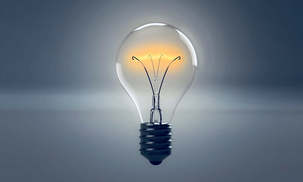- APL
- Utilities Review
City Utilities Review
|
USA utilities are delivered to homes by three main groups:
|
 |
|
Commercial providers produce electric powerlines and natural gas pipelines.
City governments maintain water, wastewater, trash, and recycling. Citizen co-ops develop utilities when commercial providers and local governments cannot offer service due to remoteness of location or low population density within a region. |
|
|
Are electricity providers always investor-owned companies?
No. Utilities are not standardized in the USA. Cities can structure utilities in any format that enables full service to the most citizens. |
|
|
Why are utilities so expensive?
Maintaining cables and pipelines is an extensive undertaking. Energy delivery is most efficiently structured by a single provider and thus natural monopolies tend to arise around utility servicing. In most markets there is only one source company, leaving consumers with few pricing options. This has led to localized experiments for new ways to create competition. |
|
|
In Houston, Texas residents can choose from a list of several electric companies who are authorized to pull power from the central grid.
In Los Angeles, California the local government sells electricity to fund energy initiatives, endorse movement toward clean energy, and increase competition to lower costs for citizens. In New York City the government incorporates performance-based regulations to reward companies for meeting renewable energy objectives. |
|
|
Who can I contact about overcharges?
The Public Utilities Commission! Utility providers are regulated by the PUC, a government agency, within each state. Prior to contacting the PUC, your concern must be addressed with your service provider. If the provider is unwilling to assist you, then a case may be opened with the Public Utilities Commission. Read our guide on how to get a utility refund for gas, electric, and water overcharges. |
|
What are the largest US energy companies?
Pacific Gas and Electric (CA):
9.7 million utility consumer accounts
Duke Energy (NC):
9.2 million utility consumer accounts
SoCalGas (CA):
6 million utility accounts
Pacific Gas and Electric (CA):
9.7 million utility consumer accounts
Duke Energy (NC):
9.2 million utility consumer accounts
SoCalGas (CA):
6 million utility accounts
American Water System
|
How much water does the US consume daily? The USGS estimates the USA uses 90 gallons of water per day per person. This equates to 29 billion gallons of water daily. Water usage swells to 350 billion gallons each day when including commercial and agricultural consumption. |
|
Gas Pipeline
|
How many natural gas pipelines are in the USA? The EIA calculates 210 natural gas transmission pipelines extend over 300,000 miles within the United States and lead to over 2 million miles of distribution pipelines. |
|
Waste Collection
|
How much trash does the USA create daily? The EPA estimates the USA creates 5 pound of trash per day per person. This equates to 1.6 million pounds of trash daily considering the current population. |
|
